Greetings from Wells, Maine! We have just returned from a tour of Eastern Europe with "Grand Circle Travel". Here are a few of the sights we saw and the things we did in the 16 days (6/17 - 7/2) we were gone. Enjoy the pictures. I included about a quarter of what I took. I used so many pictures and such long narratives that I had to break the web site int 2 parts. This is Part 1. I hope it isn't too long for you.
Finally, there are 8 pages in Part 1, it will take a while. I dont know how you could spend 3 weeks in that part of Europe without taking lots of pictures. PS All the spelling mistakes, typos, and bad jokes are mine.
This is a map showing the route we took after our flight from Boston to London to Berlin. We spent two days in Berlin, Germany; took a train to Warsaw, Poland and were there for 3 days; then a bus to Krakow, Poland for several days; then another bus to Budapest, Hungary for 3 days; then another bus ride to Prague, Czeck Republic (with a stop in Bratislava, Slovakia) for several more days; and finally back to Boston. Whew!!
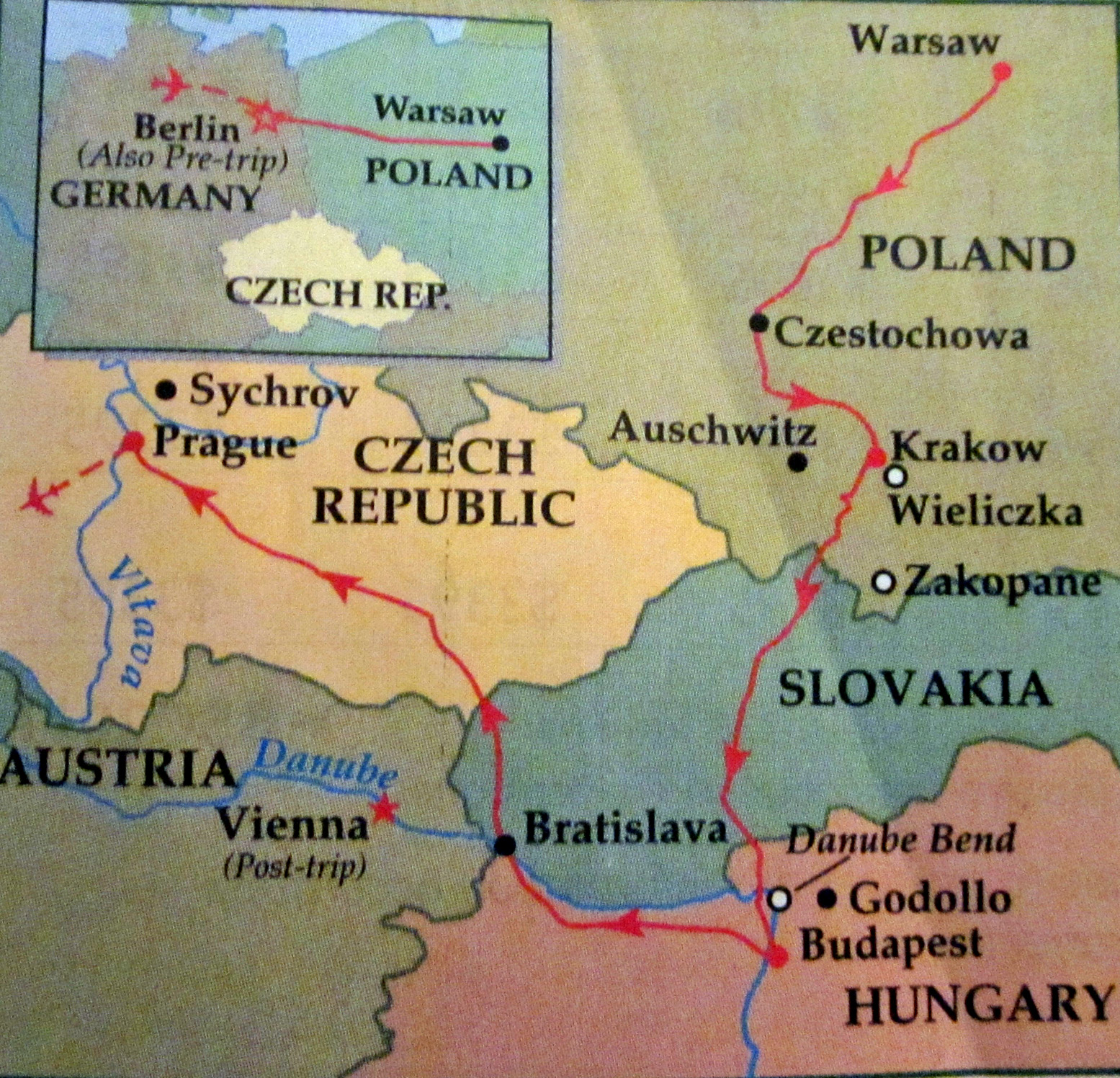
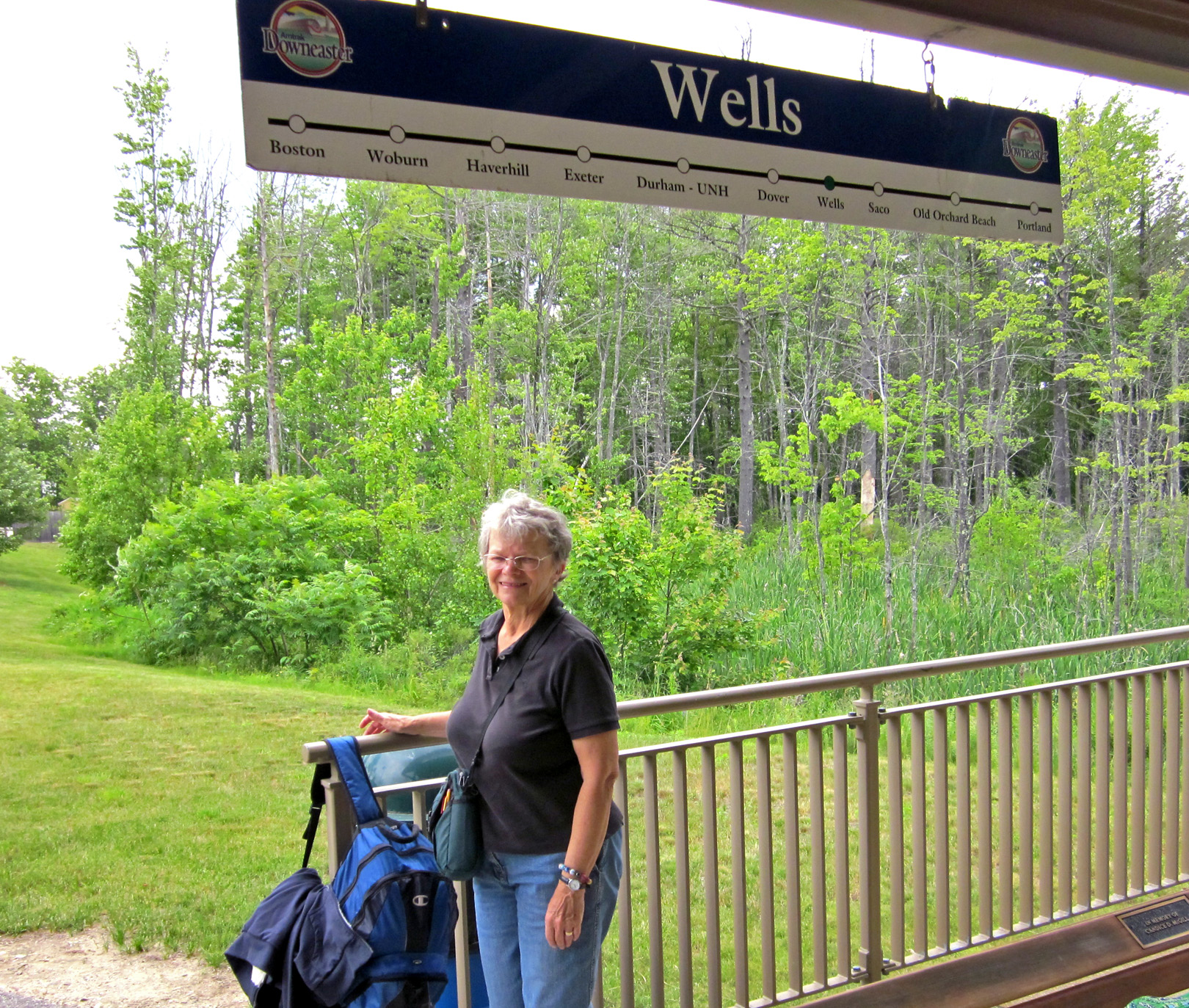
Our trip started in Wells, ME, where we spend our summers. Mary Ann is an old AMTRAK fan because she takes "The Downester" regularly to Boston to visit our Zoe - our grand daughter (and family) in Cambridge.
It takes about 1.5 hours to go from Wells to Boston. It's a nice ride, it's comfortable, and it's cheap ($18.50) round trip (for seniors).
Of course the Internationai Terminal at Logan Airport is jammed with people trying to get through security, but Mary Ann is still smiling.
We met Edina Eigler (AKA Edi)- our Trip Director at The Ramada Plaza Hotel in Berlin after a lot of flying on cramped British Airway flights. She's Hungarian and she speaks excellent English. She's also a super terrific Tour Leader. She was with us for 15 days.
This is our room at the Ramada on Prager Strasse. It was in a quiet part of Berlin, close to the U-Bahn (Underground Metro). One great thing about the hotel was the breakfast buffet. There we lots of different stuff to chose from and we even made sandwiches to take for lunch.
After a brief nap, we joined the rest of our travelling party - all 35 of them. We had a brief orientation talk by Edi, got some Euros, and hopped on our bus for a quick city tour. We then ended up at this restaurant under an S-Bahn bridge (Surface Metro) for our first dinner together. We had salad, Boulette (meatball with mushroom sauce), red cabbage, and dumplings, all washed down with Kindl Pilsener. Hot apple cake for dessert. Everything was excellent and filling.

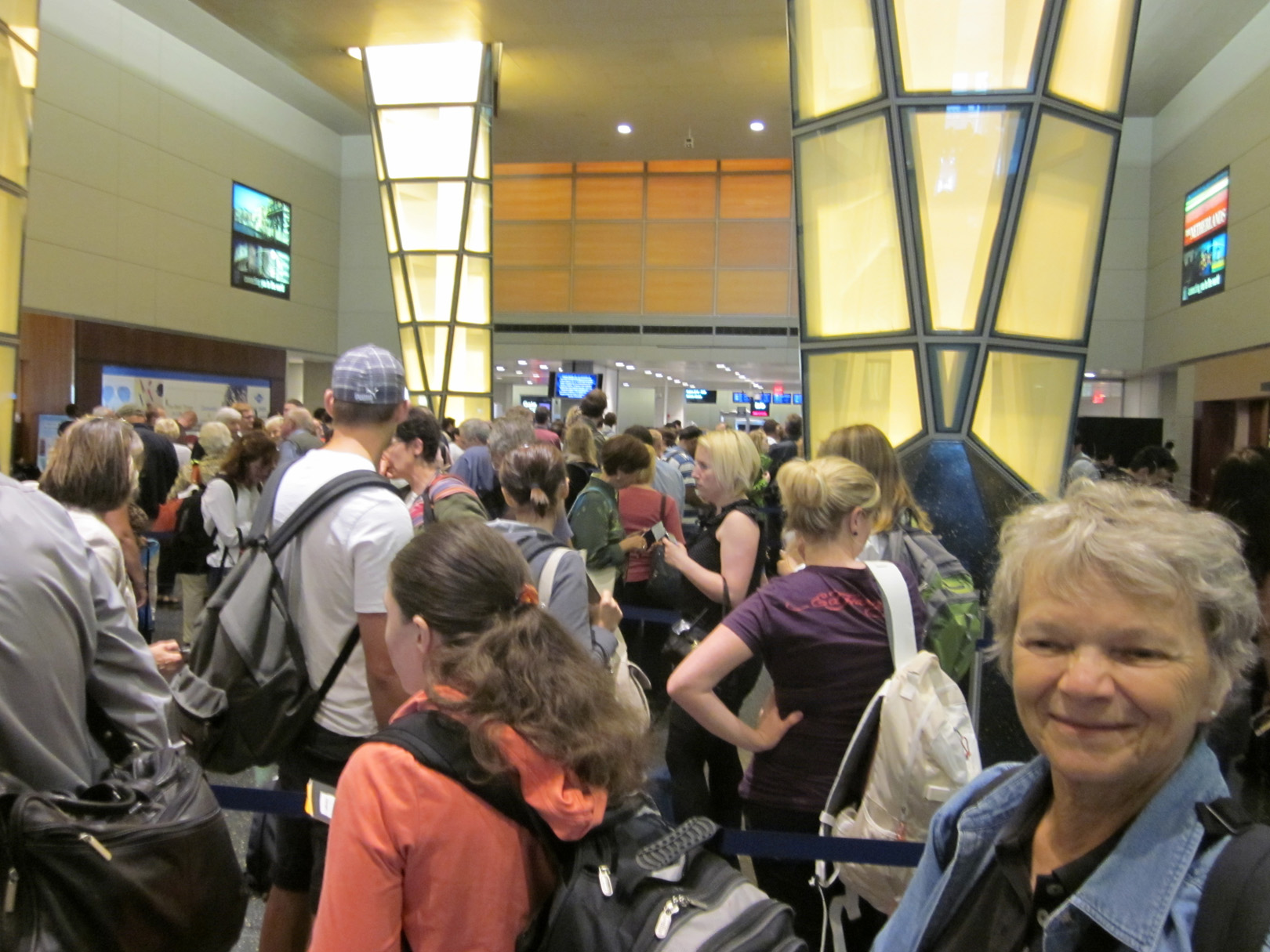
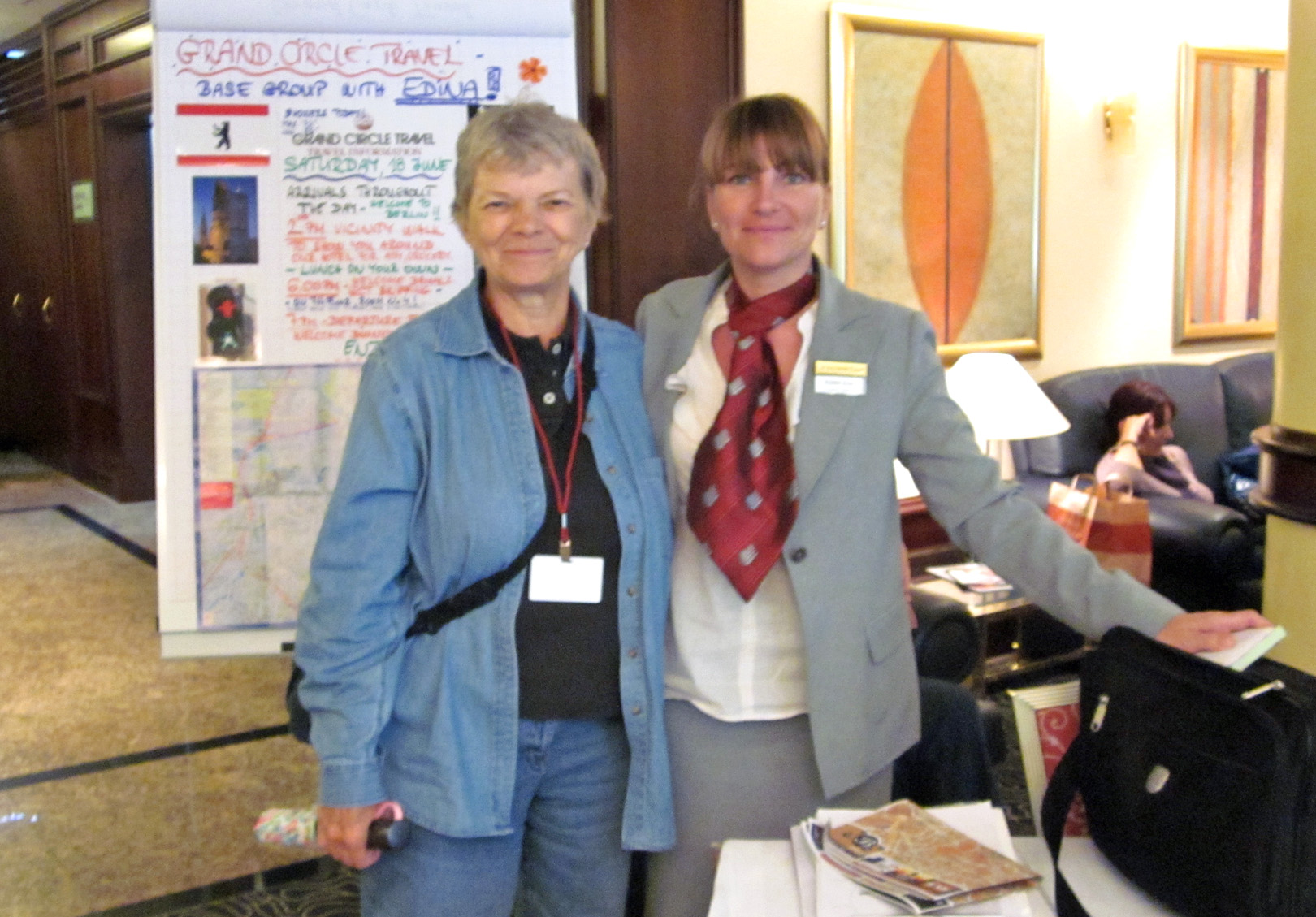
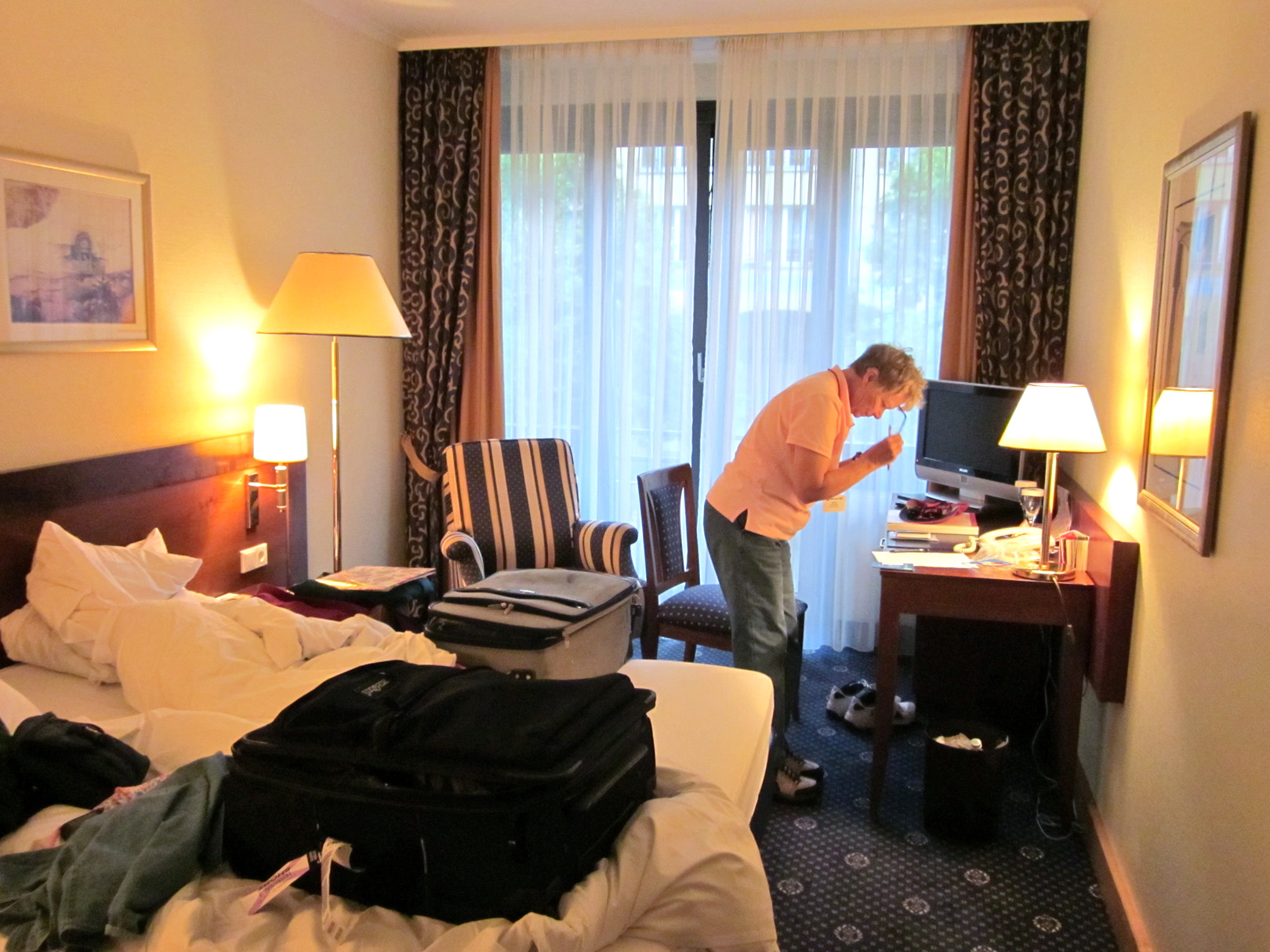
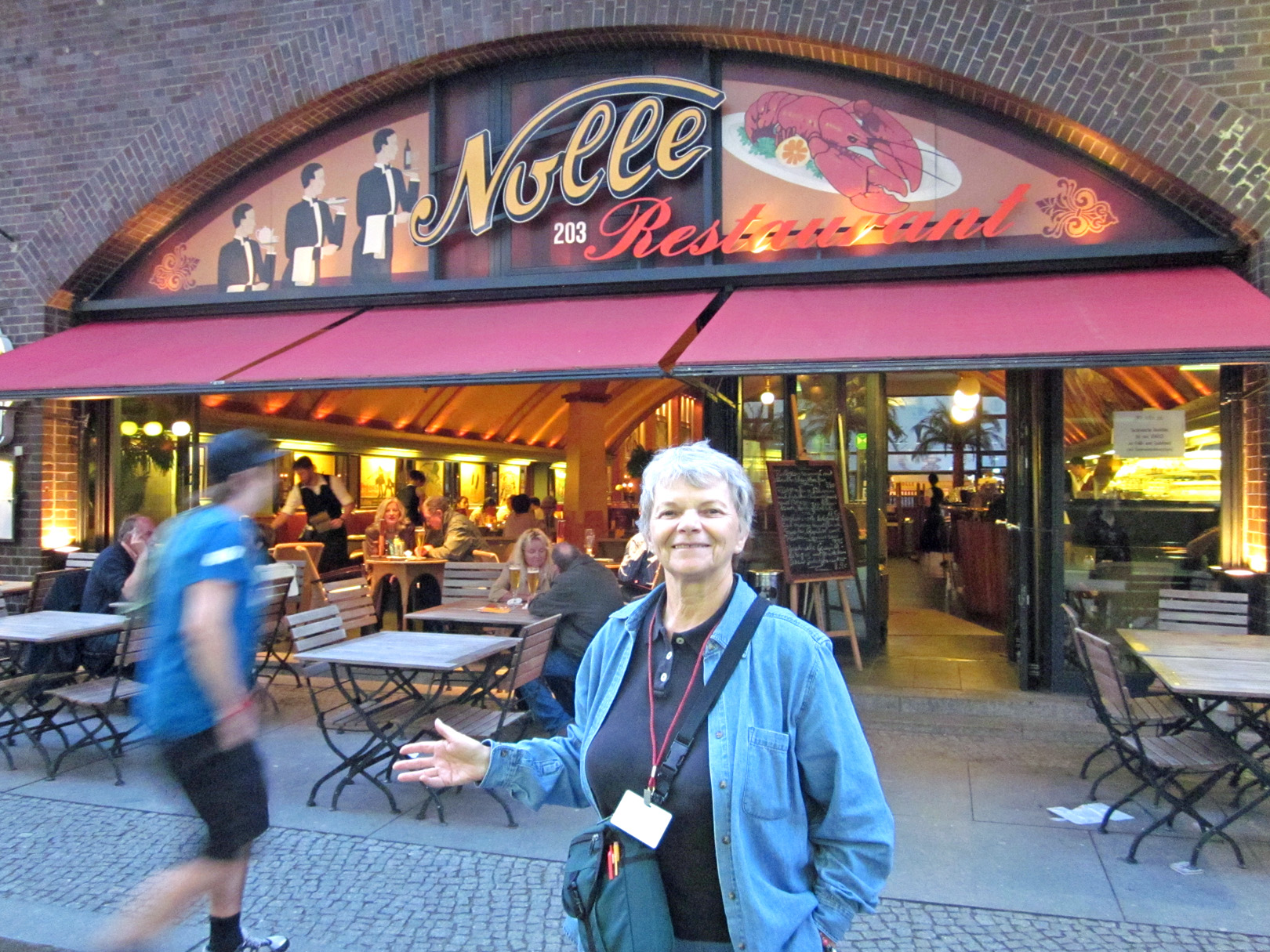
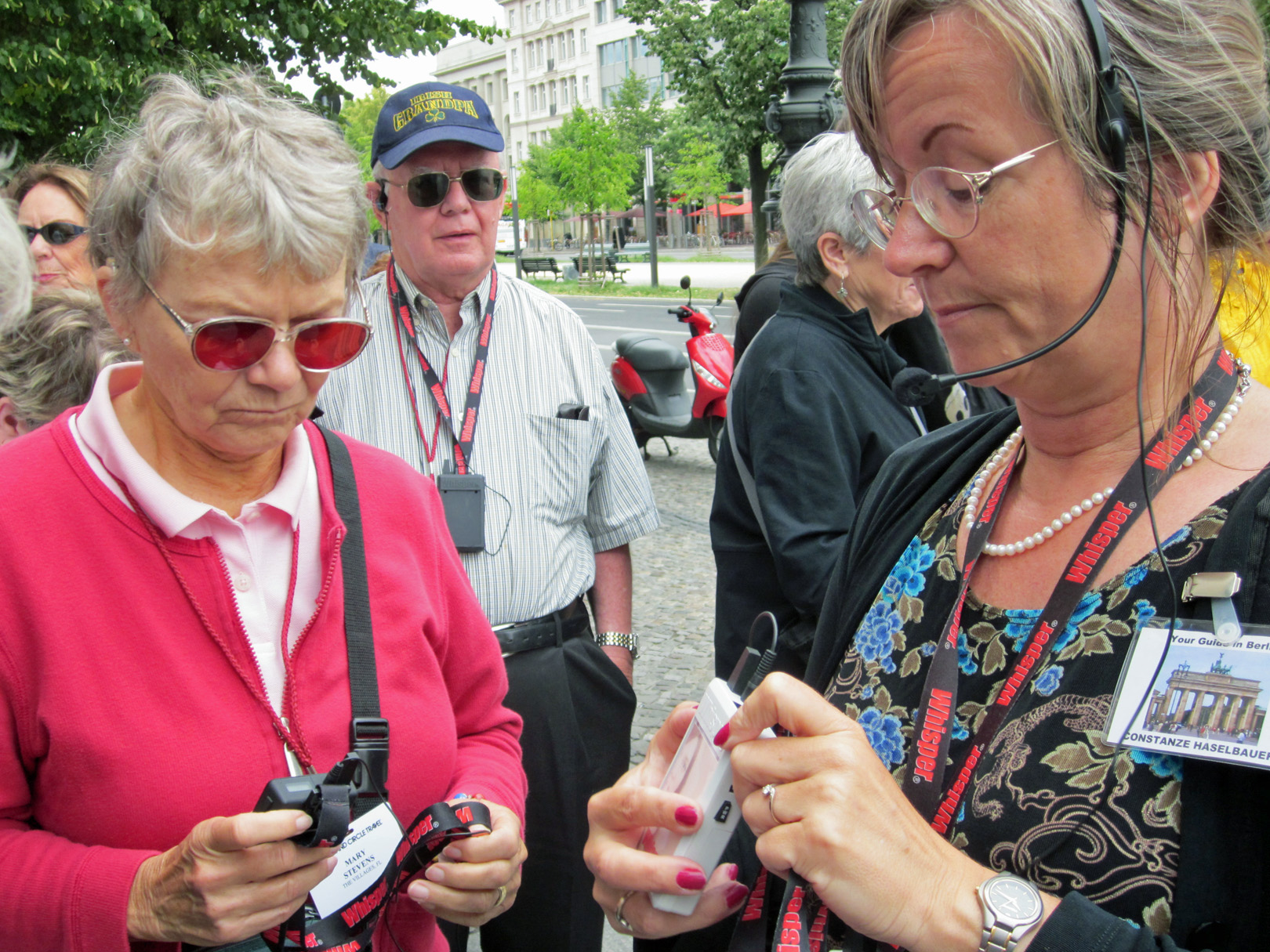
Here is constance Haselbauer, our Berlin city guide. She is trying to get us all using "Whispers" - communications devices that allows us to hear our guide even in a big noisy crowd. They worked OK, but it took ome getting used to. I lost both my hearing aides because I was taking them out and putting them in frequently. I must have pulled them out of my shirt pocket with the ear hook on the damn "Whisper"!
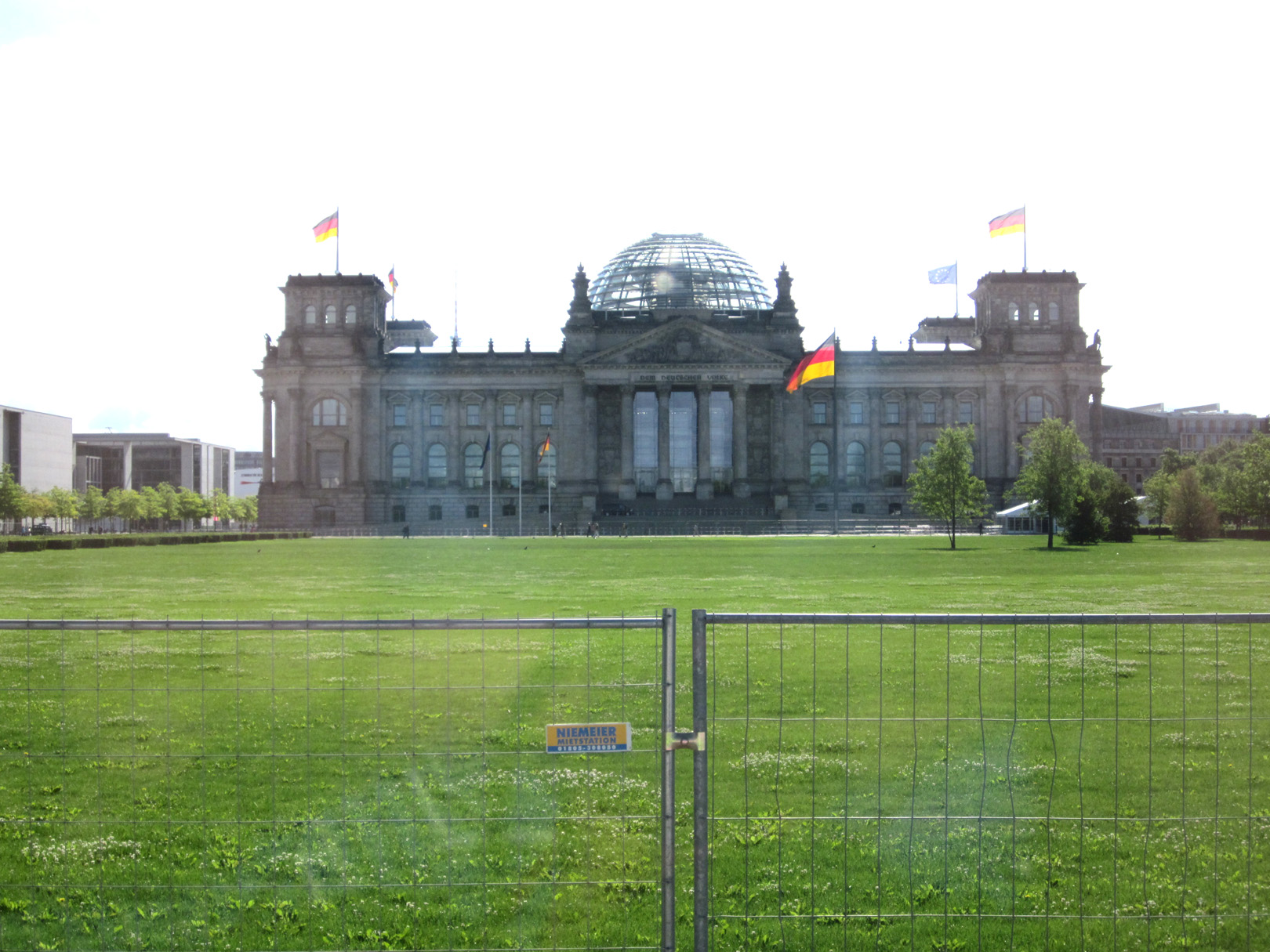
The Reichstag fire was an arson attack on the Reichstag building in Berlin on 27 February 1933. The event is seen as pivotal in the establishment of Nazi Germany.
A Berlin fire station received an alarm call that the Reichstag building, the assembly location of the German Parliament, was ablaze. The fire started in the Session Chamber, and, by the time the police and firefighters had arrived, the main Chamber of Deputies was engulfed in flames.
Inside the building, a thorough search conducted by the police resulted in the finding of Marinus Van der Lubbe, council communist and unemployed bricklayer, had recently arrived in Germany, ostensibly to carry out his political activities. The fire was used as evidence by the Nazis that the Communists were beginning a plot against the German government. Adolf Hitler, who had been sworn in as Chancellor of Germany four weeks before, on 30 January, urged President Hindenburg to pass an emergency decree to counter the "ruthless confrontation of the Communist Party of Germany". With civil liberties suspended, the government instituted mass arrests of Communists, including all of the Communist parliamentary delegates. With them gone and their seats empty, the Nazis went from being a plurality party to the majority; subsequent elections confirmed this position and thus allowed Hitler to consolidate his power.
The building was made safe against the elements and partially refurbished in the 1960s, but no attempt at full restoration was made until after the reunification of Germany on October 3, 1990, when it underwent reconstruction led by internationally renowned architect Norman Foster. After its completion in 1999, it became the meeting place of the modern German parliament, the Bundestag.
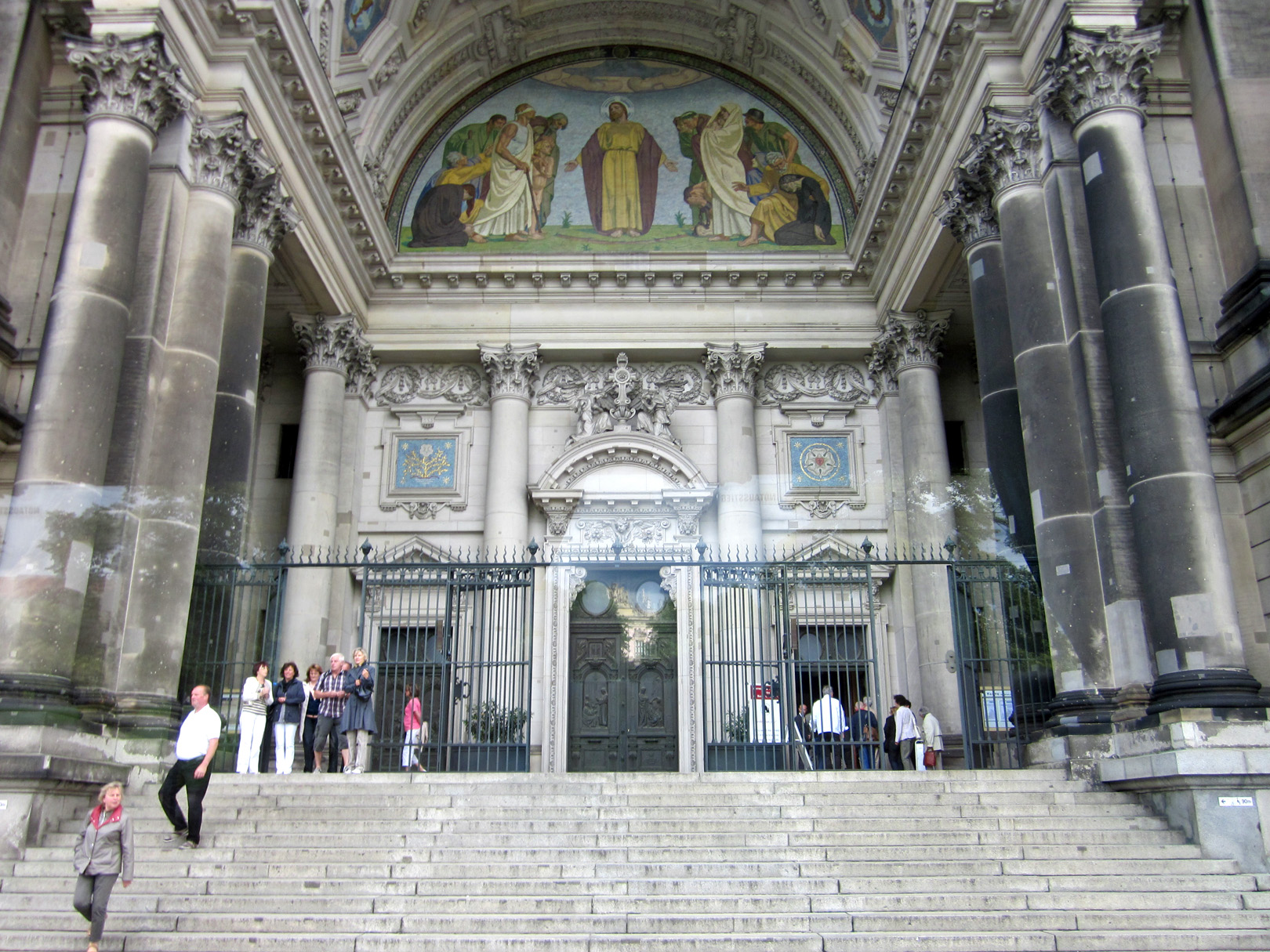
Evidence of WWII damage can still be seen - as in the repaired columns on this church. Much of the church has been restored, but the original columns remain.
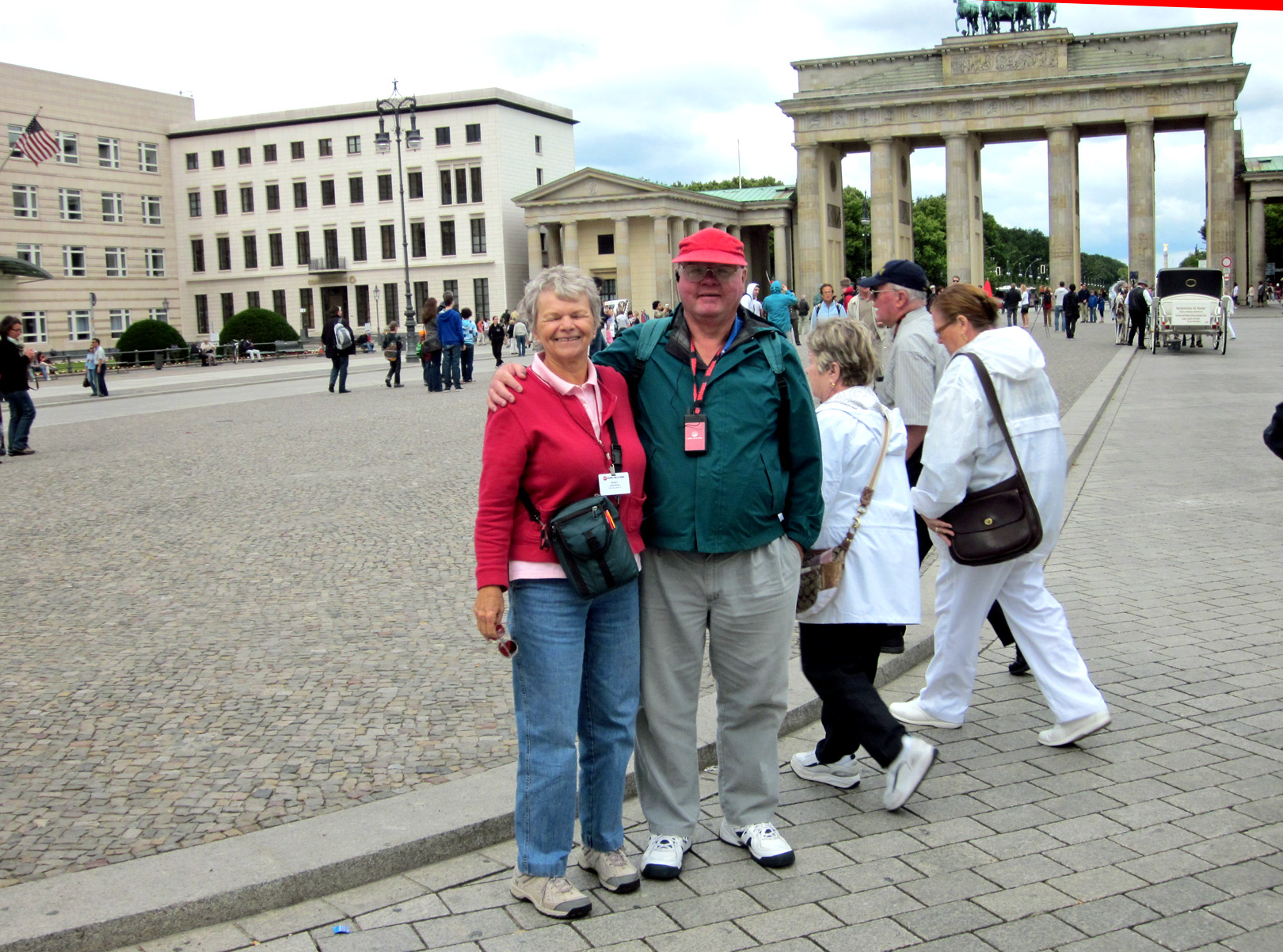
Here is the Brandenburg gate, from the West Berlin side. It was restored after the war, but was walled off to the west by The Berlin Wall. (Note the US Embassy on the far left.) This is a favorite site for tourists!
| Go to P.2 | Go to P.3 | Go to P.4 | Go to P.5 | Go to P.6 | Go to P.7 | Go to P.8 | Go to P.9 |